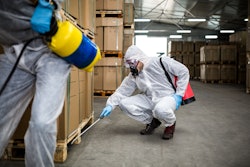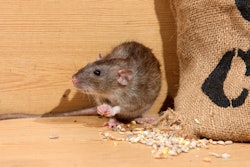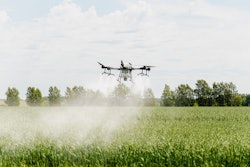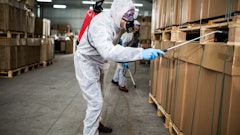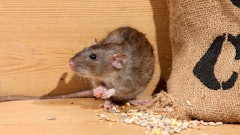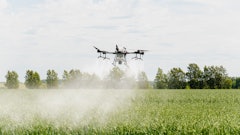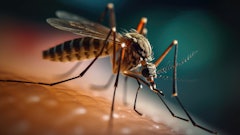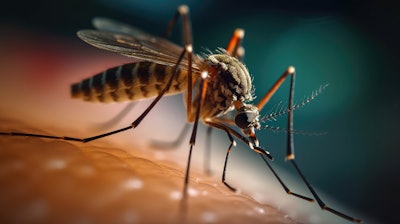
As one of the most regulated industries in the country, food processing professionals know the importance of audits. Whether an internal, second- or third-party, or regulatory audit, they’re designed to assess safety protocols, identify risks, and ultimately protect health and safety. Audits are becoming even more important, as the number of foodborne illnesses from contaminated food is on the rise. The U.S. Public Interest Research Group (PIRG)’s Food for Thought 2025 reported an increase in cases of foodborne illness during 2024, and the number of hospitalizations and deaths doubled.
Foodborne illnesses can be caused by pathogens, such as E. coli and salmonella, that are transmitted by common pests in food processing facilities. Since pest management can account for 20% of your score, it’s critical to understand its impact on the four different types of audits, tips for preparation, and how to make continuous improvements after an audit is complete.
How pest control matters in every audit
While the various types of audits may have different objectives and audiences, one thing is true for all four: pest management must be considered every step of the way.
· Internal audits: These self-assessments ensure an organization is following its food safety plan and allow it to make corrections if needed. From a pest standpoint, this is the time when food processors should be confirming employees are following an ongoing preventive strategy including monitoring for pest activity, removing waste quickly and properly, and ensuring all surfaces are cleaned and sanitized to help deter pests.
· Second-party audits: Most commonly, second-party audits are conducted by customers to make sure safety standards are aligned. A failed second-party audit can result in lost revenue, so acing them is a crucial component of a successful business. Even a single pest sighting can damage your reputation amongst customers and lead to a failed audit.
· Third-party audits: Performed by an outside organization, sometimes to get certified, these audits “stress-test” the food safety plans a company has in place. Improper pest management and documentation can negatively impact your audit score, making an integrated pest management (IPM) strategy even more important.
· Regulatory audits: When undergoing a regulatory audit performed by the U.S. Food and Drug Administration (FDA), there’s no gray area – businesses either pass or fail. These audits also have the strictest implications for noncompliance, including civil or criminal legal action. Ongoing monitoring, removing trash that could harbor pests, and an established pest control strategy are required to pass a regulatory audit.
Preparation is key
While audits can be intimidating, thorough preparation is what separates a successful audit from a failed one. Here are some of the ways food processing facilities can get equipped in advance:
· Secure management support: Establishing a comprehensive food safety plan without full support from management sets your business up for disappointment. Food safety is becoming more important with every passing year, so instead of viewing it simply as a cost of doing business, management should understand the return-on-investment (ROI) of food safety and support it wholeheartedly. It protects customers, reputations, and ultimately, the bottom line.
· Conduct a pre-requisite audit: In addition to prevention and mitigation services, some pest control companies offer plant inspections to help customers prepare for an audit. When selecting a pest management partner in this industry, food processors should ensure the company has credentials in both entomology and food safety and employs professionals who have completed FSMA-specific requirements.
· Know the types of pests you might encounter: Food processing facilities have the three main pest attractants (food, water, and shelter) in abundance, so professionals in this industry should be familiar with the common pests. Stored product pests, which include confused flour beetles, red flour beetles, and saw-toothed grain beetles, feed on goods such as flour and grains. The presence of beetles can easily turn into an infestation and lead to damaged products, which affects profit. Flies and cockroaches also frequent food processing facilities. In addition to being a nuisance to employees, they transmit bacteria and pathogens that can cause foodborne illnesses. Knowing these pests, as well as signs of activity, will help identify a pest problem early to help catch it before it turns into a full-blown infestation.
Using audit results to improve food safety
After an audit is over, food processors still have a lot of work to do. Whether the audit was a resounding success or left room for improvement, there are several steps businesses can take to continue improving their food safety plan:
· Perform a root-cause analysis: In many cases, especially following failed third-party audits, quality assurance (QA) managers will receive a resultant report that outlines non-conformities and identifies why they didn’t meet certain standards. This is a useful tool, as the QA manager can then conduct a root-cause analysis and determine corrective actions to ensure audit success in the future.
· Increase the cadence of internal audits: The goal of any food processor should be to always remain audit ready. Regardless of the results of a regulatory, second-, or third-party audit, conducting regular internal audits ensures processes are working as intended and provides a lower-stakes opportunity to fix issues that arise.
· Implement pest prevention and mitigation strategies: Comprehensive pest management is nonnegotiable for food safety, but it can also foster a happier, healthier workforce with reduced turnover. If you don’t already, partner with a qualified pest control provider that can develop a customized plan to help prevent pests.
As foodborne illnesses become more common, stringent food safety procedures are increasingly important. Audits are an opportunity to evaluate processes, identify areas for growth, and make improvements that help protect consumers. By learning how pest management plays a role in each type of audit, developing a culture of preparation, and continuously improving, food processors can shift from a reactive mindset to a proactive one. The most successful facilities don’t get ready for the next audit; they operate as if every day is audit day.





